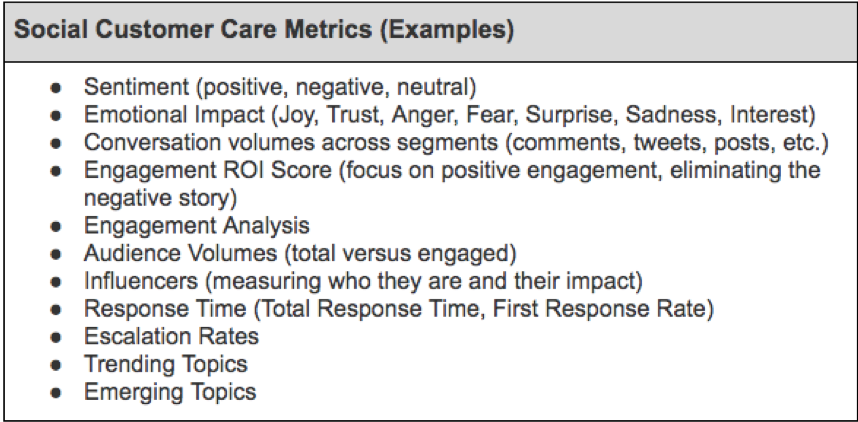2017 was an important year for social media customer service for brands. We learned many things both from success stories to failures. There were also some innovations that changed the face of social customer service. AI and chatbots made significant strides in 2017. You can now pay your bills or book movie tickets through Facebook Messenger.
Social media insights and analytics are now telling stories about customers that brands are listening to, from understanding who their audience is to what is important to them.
So what’s next for 2018 for customer service? We’ve learned that by 2020, customer experience will overtake price and product as a brand differentiator so it’s important to pay attention now.
1. Using Chatbots and A.I. to make social customer service more efficient
Artificial intelligence (AI), mainly in the form of chatbots, gained traction in 2017 for social customer care activities for many brands, providing assistance to customers. It’s easy now to order pizza, find a restaurant or even schedule a flight with the help of chatbots.

While the advances of chatbots have come a long way in 2017, the majority of customers still prefer to engage with a human. Brands need to be smart to ensure that they do not appear disconnected from their customers. 85% of customers that would prefer a human customer service representative are likely interacting with an ill designed and poorly tested chatbot.
The focus in 2018 will be to use AI in more genuine customer interactions, replacing traditional methods of human customer service with well built and highly integrated chatbots. This will allow for a more efficient customer process. Strategically implemented and well-designed chatbots can tell a brand story, push forward commerce, keep audiences engaged, and help grow business. The best chatbots (or virtual assistants) don’t try to be human, but use decision trees and multiple system integrations to create a smooth, natural feeling process between the customer and the relevant systems they need to query and post to.
The following are some simple things that can ensure that chatbots don’t make companies look disconnected from their customers:
- Have the best chatbot APIs available and test them before releasing them into a live environment. Define the purpose of the chatbot and test, test, test.
- Use analytics from chatbots and human engagement activities. There is a treasure trove of engagement data that can be used to understand what customers are thinking, the experiences they are having, and the way they want to interact with the brand. Use this insight to improve both self-service and human interactions.
- Be active on social media. Respond quickly – monitor channels around the clock to ensure a timely response to customers
2. Integrating CRM systems with social media customer service data
Every action a person takes online creates data including interactions, emails, social engagement, etc. This data helps brands learn more about their target audiences so they can create customized online experiences that supports ROI.
Two big sources of customer service data are the Customer Relationship Management System (CRM) and Social Media channels. It is important that these platforms integrate together to provide a cohesive customer care plan; a solid integration can also provide valuable intelligence for brands to use to better understand its customers.
3. Driving traffic to social media from traditional customer service channels
Helping a customer over social media is significantly less costly than helping that same customer over the phone or email. It also reduces the total time needed to spend with each customer. Driving traffic away from more costly customer service channels will become a bigger trend in 2018 particularly. This is due to new innovations in social media, such as chatbots and messaging apps. Additionally, customers continue to prefer the convenience, ease and promptness of social media channels. In 2017, service inquiries were up by 71% on both Twitter and Facebook.
4. Identifying ways to understand and value social customer service impact on ROI
If a brand’s primary use for social media is providing customer service, then the idea of “ROI” is about cost savings and NOT a direct increase in revenue from social activity. It’s important to quantifiably prove the value of social media activities. By defining social customer service objectives, brands will then be able to prove whether or not they’re achieving success. One objective might be to deflect inbound requests (from more costly customer service channels like phone or email) to other channels by using social media to quickly resolve issues for your customers. Brands will need to measure these activities to understand how they impact ROI. For example, putting a cost on each inbound request that is deflected can help brands understand the cost savings for deflection rates.
Brands should identify specific metrics and calculations to prove the ROI of its objectives. We discuss the importance of measuring these activities in the last trend.
5. Understanding the impact of social customer service with regular key insight reports
It’s essential for brands to test and track the performance of their social customer service strategy. They can then identify successes and opportunities for improvement as well as understand their audience, improve strategic plans and fine-tune objectives. Along with the use of regular insights reports, this process will be done more and more in 2018. Without data or feedback on what’s happening on social channels, and reviewing them on a regular basis, brands cannot understand what is or is not working.

Key performance indicators (KPIs) exist to measure the success of a brand’s strategies and objectives. It’s important to have KPIs that fit the technology they’re meant to measure, and the most meaningful success factors.
2018 social media customer service trends predict that customers will spend more time on social media platforms. This means that brands will need to improve their online presence in the year to come. They will need to do a better job staying on top of innovations as well as paying close attention to how their channels are performing with regular insights.





